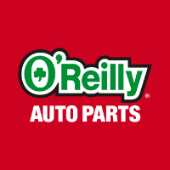-
Welcome to Auto Parts Forum
Whether you are a veteran automotive parts guru or just someone looking for some quick auto parts advice, register today and start a new topic in our forum. Registration is free and you can even sign up with social network platforms such as Facebook, X, and LinkedIn.
Automotive Thermostats Through the Years
-
Similar Topics
-
By Counterman
Hahn Automotive Warehouse announced the passing of General Manager Bobby Scheer, a key member of the founding Scheer family, former owners of Prime Automotive. The company said he passed away peacefully on April 2, 2025, leaving behind a legacy of dedication, hard work and a passion for both family and business that inspired all who knew him.
The company added that Scheer was a successful entrepreneur, but, more importantly, he was a loving husband, father and grandfather. He was a pillar of the automotive aftermarket industry and a beloved member of the Hahn Automotive family. Over the years, his unwavering commitment to Prime Automotive and his support for employees and customers helped establish Prime as a leading supplier in the Tri-State area. His continued involvement with the company after the Hahn acquisition was a testament to his enduring love for the business and industry, Hahn said.
Danny Chessin and Eli N. Futerman, co-presidents of Hahn Automotive Warehouse, shared the following statement:
“The Hahn family, along with all those whose lives were touched by Bobby’s leadership, friendship and generosity, will miss him dearly. We find comfort in knowing that his core values will continue to guide us, and that the foundation he built will serve as a lasting tribute to his remarkable life and career.”
Hahn added that Scheer’s memory will live on as a blessing to his family, colleagues and all who had the privilege of knowing him.
The post
link hidden, please login to view appeared first on link hidden, please login to view.
link hidden, please login to view -
By OReilly Auto Parts
SPRINGFIELD, Mo., April 01, 2025 (GLOBE NEWSWIRE) -- O’Reilly Automotive, Inc. (the “Company” or “O’Reilly”) (Nasdaq: ORLY), a leading retailer in the automotive aftermarket industry, announces the release date for its first quarter 2025 results as Wednesday, April 23, 2025, with a conference call to follow on Thursday, April 24, 2025.
link hidden, please login to view -
By Counterman
link hidden, please login to view (NMG) announced it is celebrating 50 years of aftermarket innovation, marking the journey that began with the founding of Transtar Aftermarket Solutions on April 1, 1975. As NexaMotion looks ahead to the next 50 years, it now has 125 locations and over 1,500 team members, representing the industry’s leading brands in transmission and general repair, the company said. “Our commitment to supporting repair shops goes beyond being a supplier of products,” said Neil Sethi, CEO of
link hidden, please login to view. “We look to develop innovative solutions to help simplify complex vehicle repairs. This requires more than just auto parts; it requires a dedicated partner. Today, as we look ahead to our next 50 years, we will continue to innovate and expand our parts selection, network and new solutions to help our customers evolve and advance in an increasingly complex industry.” NexaMotion Group said it has been on an aggressive growth and expansion plan over the last two years, acquiring five different businesses that align with the company’s long-term strategic plan, growth trajectory and goals. The company continues to invest in state-of-the-art tools, platforms and technologies like
link hidden, please login to view to help drive the success of auto repair shops. According to Sethi, connected vehicles are poised to transform how vehicles are diagnosed and repaired. “Technology is reshaping the future of automotive repair,” he said. “We’ll be able to leverage AI tools and platforms to streamline the process for repair shops from diagnostics to parts ordering and all the way through to vehicle programming.” He added, “As an innovation-driven company, we will remain at the forefront of developing trends by being a solutions provider.”
As NexaMotion Group looks ahead to the next 50 years, connected vehicles are set to transform the repair shop ecosystem. The company’s products and services will be an integral part of this evolving landscape. Staying closely aligned with customer needs, NexaMotion Group said it remains committed to its mission: simplifying complex vehicle repair to keep the world moving.
The post
link hidden, please login to view appeared first on link hidden, please login to view.
link hidden, please login to view -
By Counterman
Holley Performance Brands announced an expansion of its automotive chemicals portfolio with three new products: NOS Octane Booster, Holley Carburetor Cleaner and Baer Spray Brake Cleaner. Holley said the new product lineup will deliver solutions for automotive enthusiasts and racers seeking improved power output, superior cleaning and enhanced system efficiency. The announcement follows the news of Holley’s new agreement to be the exclusive developer and distributor of Cataclean products in North America.
“The expansion of our chemicals portfolio reflects our ongoing commitment to delivering high-performance solutions that our customers trust,” said Matthew Stevenson, president & CEO, Holley Performance Brands. “By leveraging our iconic brands in this market, we are equipping drivers with the tools to enhance their vehicles’ performance, safety and reliability and strengthening our role as a global leader in the automotive aftermarket.”
Boosting Power and Cleaning with Confidence
link hidden, please login to view said the Octane Booster from NOS is designed to raise octane levels of fuel by up to five numbers for high-compression sport and race engines. The company added that it delivers improved horsepower, reduces NOX emissions and promotes better engine knock protection. The sensor-safe, made in the USA formulation fills a critical role of preventing pre-ignition and damage and its significant octane-boosting capabilities make it exclusive for off-road, race-only enthusiasts looking for maximum power, Holley said. The company also said the Holley Carburetor Cleaner is formulated to be tough on deposits and carbon buildup while remaining safe for sensors, plastics and metal components. Engineered for carburetors and throttle bodies, its versatility extends to a variety of engine types to restore responsiveness and ensure smoother operation. Made in the USA, this professional-grade product is designed for both performance enthusiasts and everyday drivers, the company said.
link hidden, please login to view added that the Baer Spray Brake Cleaner is designed to optimize brake system performance. Made in the USA, Baer Spray’s low-VOC formula removes machining oils, factory coatings, dirt and grease, ensuring a proper break-in for new pads and rotors. Baer Spray helps reduce brake noise, enhance brake bite and improve overall braking efficiency – making it an essential tool for both professional mechanics and DIY enthusiasts. Holley said the NOS Octane Booster and Baer Spray Brake Cleaner are now available, while the Holley Carburetor Cleaner is available for pre-order.
The post
link hidden, please login to view appeared first on link hidden, please login to view.
link hidden, please login to view -
-
By Counterman
link hidden, please login to view announced the creation of NEXUS Automotive Turkey, which it said will increase development opportunities within the N! Community in the country. The new entity is based in Ürmaniye, Instanbul. With a presence in 145 countries, with 523 members, 2,319 WDs, 96 suppliers and close to 10,000 retail stores, NEXUS said it is equipped to strengthen its efforts in Turkey.
A news release from NEXUS announcing the development said NEXUS Automotive Turkey will strive to become a leading force in the Turkish aftermarket, based on turnover, product range and distribution capacity. The new structure will play a critical role in enhancing NEXUS positioning, developing next-generation collaborations, smart supply solutions and the digital transformation shaping the future of the industry with its key stakeholders. “With NEXUS Automotive International’s global strength, extensive supply network and innovative solutions, NEXUS Automotive Turkey’s ambition is to unlock the full potential of the Turkish automotive aftermarket,”
link hidden, please login to view explained. The founding shareholders of NEXUS Automotive Turkey include NEXUS Automotive International, Dinamik and Genckaya, demonstrating the intent of striking a balance between international support and the expertise in the local automotive aftermarket. NEXUS said the initiative aims to satisfy the Turkish market demand for new solutions of leaner supply chains, digital transformation and alternative sourcing strategies. Turkey is also a very important region of the aftermarket, with over 30 million cars with an average age of
link hidden, please login to view. “We are very excited to launch NEXUS Automotive Turkey. Its role will be crucial in strengthening our position as leader in a market with great potential. The structure will also help with aligning more closely with both our suppliers’ and members’ expectations. Developing the Turkish automotive aftermarket will be instrumental to our next chapter,” said CEO Gaël Escribe.
The post
link hidden, please login to view appeared first on link hidden, please login to view.
link hidden, please login to view
-



Recommended Posts
Join the conversation
You can post now and register later. If you have an account, sign in now to post with your account.
Note: Your post will require moderator approval before it will be visible.